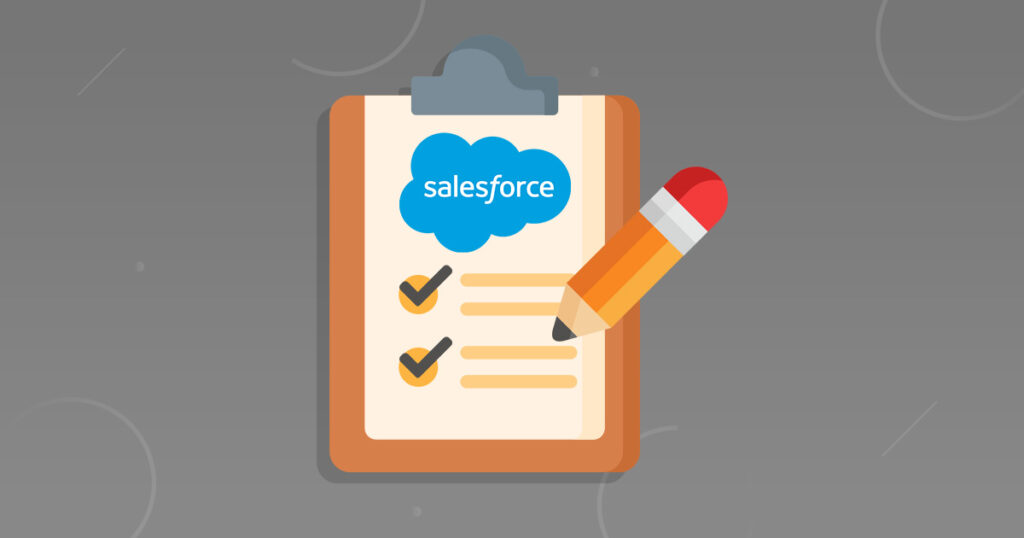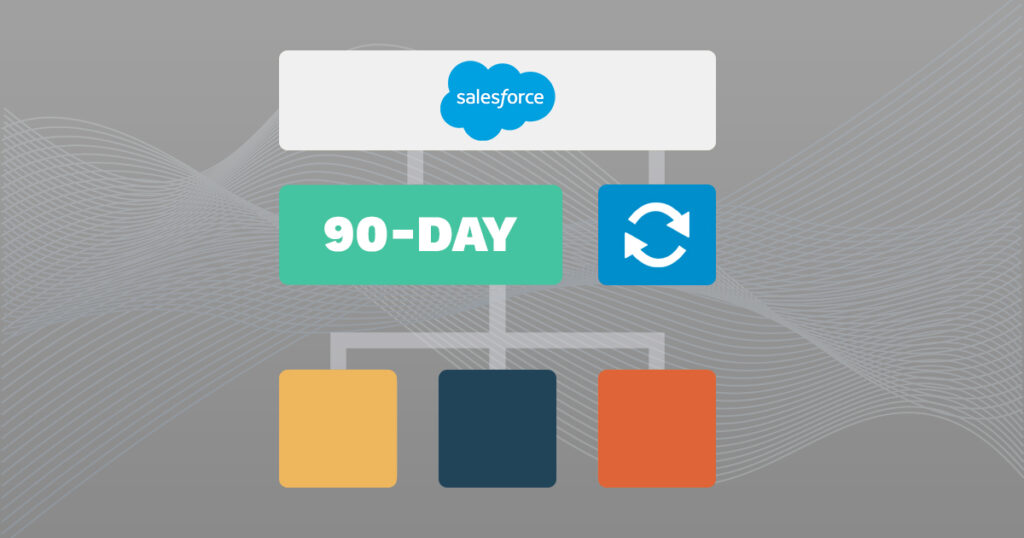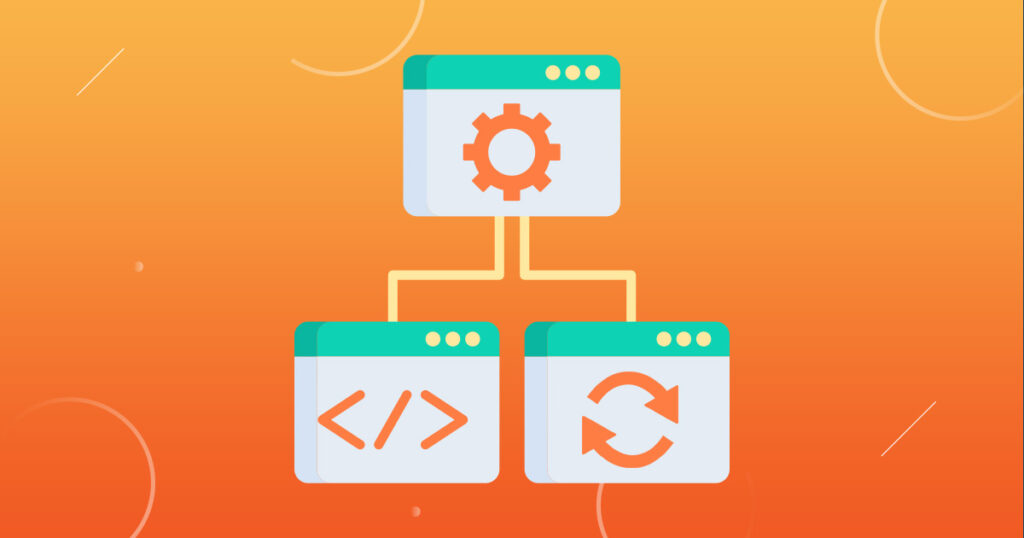It’s the middle of the year. You have climbed through Q1 and Q2, gathered a pile of data, and can now see the road that winds toward December.
The question is whether your Salesforce Org has the stamina and structure to keep revenue climbing or if hidden gaps will cause an unexpected stall in your progress.
A disciplined health check answers that question early… before these small cracks turn into missed quotas.
Our Salesforce-Certified experts at CRM Forge are about to walk you through the top seven metrics that give mid-sized and enterprise teams a crystal-clear view of the things that really move the needle, such as:
- Opportunity Pipeline health
- User engagement
- Workflow & Automation efficiency
- Customer loyalty
Keep reading to learn how to translate every number into revenue-driving action.
July sits at a strategic crossroads. You have enough year-to-date data to see patterns, but enough runway left to redirect resources if those patterns present a risk.
A mid-year audit also sets the stage for thoughtful budgeting. Instead of scrambling for last-minute fixes in October, you can align new campaigns, headcount plans, and tech investments with a well-documented CRM scorecard.
Key benefits of a July health check include:
- Course correction time: Find conversion bottlenecks now, not after Q4 results lock.
- Budget clarity: Use solid data to justify automation upgrades and training programs.
- Forecast confidence: Refresh close dates and probabilities while there is still time to influence pipeline coverage.
- Team morale: Share transparent metrics, celebrate wins, and collaborate on growth experiments so every rep feels invested in finishing strong.
With that context, let’s dig into the seven metrics that matter most.
Do you know how many of your CRM records are duplicates? When was the last time you checked duplicate and matching rules?
Duplicate accounts skew territory assignments, incomplete fields block automated journeys, and outdated contacts derail nurture programs. These factors make it impossible to strategize effectively.
Data quality deserves first position because every downstream metric (pipeline accuracy, forecast precision, and customer retention) depends on trustworthy records.
How to Measure It
- Completeness: Percentage of high-value fields populated across leads, contacts, and accounts.
- Accuracy: Percentage of records that pass email or phone validation checks.
- Uniqueness: Ratio of unique identifiers (emails, domains) to total records.
- Freshness: Average time since a record was last updated by a user, integration, or enrichment tool.
Many admins combine those factors into a single dashboard score, often aiming for 95% or higher for mission-critical fields such as industry, employee count, and buying role.
How to Improve
- Run automated deduplication every week with cross-object matching rules.
- Build validation rules that require specific data formats, standardize territory fields, and block obviously fake values.
- Use enrichment apps to append firmographic data at the moment of record creation and provide continuous updates thereafter.
- Schedule quarterly “Data Hygiene Checks” where your operations and sales teams partner to clean priority segments.
Impact on Q3 and Q4
Cleaner data means faster segmentation for fall campaigns, more accurate territory realignments, and higher win rates because reps engage the right contacts. You also avoid the year-end scramble to fix bad lists when leadership suddenly asks for a true renewal forecast.
How to Measure It
- Active Login Percentage: Users who logged in at least ten days this month divided by total licensed users.
- Core Activity Score: Weighted index of opportunities created, activities logged, and tasks completed per user.
- Feature Engagement: Usage of key features such as collaborative forecasting, CPQ, or custom objects.
Target adoption benchmarks vary by industry, but many high-performing sales Orgs push for 85% of users logging in four or more days per week and at least one revenue-related action per login.
How to Improve
- Identify low-login users and schedule micro-coaching with a power user buddy.
- Simplify page layouts or Lightning Record Pages. Every extra required field or tab slows data entry and deters engagement.
- Gamify usage with leaderboards showing top activity loggers or fastest record updaters.
- Celebrate quick wins in team meetings: “Shout-out to Jess for logging every customer call this week. That visibility helped marketing tag a cross-sell opportunity.”
- Implement view tracking on Record Pages to compile data on the amount of time each User spends on each record page.
Impact on Q3 and Q4
When adoption rises, pipeline data becomes more reliable and reps are more likely to update close dates promptly. That timeliness feeds accurate forecasting ahead of larger Q4 deals and eliminates last-minute detective work on stale opportunities.Pipeline generation often steals the spotlight, yet conversion efficiency quietly determines actual revenue. If marketing floods your CRM with leads that rarely convert, storage costs rise and sales morale sinks. Tracking conversion at mid-year shows whether top-of-funnel spend is translating into closed business.
How to Measure It
- Calculate total leads created from January through June.
- Count how many of those leads appear in closed-won opportunities.
- Divide wins by total leads for an overall conversion percentage.
- Segment by channel (events, paid media, referrals) and by persona.
An enterprise software firm might see webinars convert at 15% while trade shows lag at 3%. Identifying those gaps now directs marketing budget toward the highest-yield channels for late-year growth.
How to Improve
- Deploy Einstein lead scoring to prioritize follow-up on high-intent prospects.
- Map a nurture journey for leads without sales engagement within 48 hours. Timely content keeps interest warm.
- Train reps on consultative discovery. Better qualification reduces wasted demos and increases close probability.
- Host a mid-year funnel workshop where marketing and sales agree on an updated lead definition. Alignment boosts both volume and quality.
Impact on Q3 and Q4
Small conversion lifts compound fast. If you convert just two additional percentage points from a 10,000-lead pool, that is 200 extra customers before the holiday push. Efficient conversion also shortens the sales cycle, a metric we cover next.
How to Measure It
- Sum the value of opportunities set to close within the target window (Q3 or Q4).
- Divide this number by the remaining quota for the same period.
- Break down by segment, territory, and product line to expose gaps.
How to Improve
- Launch targeted campaigns for segments with thin coverage.
- Encourage reps to refresh close dates weekly to prevent inflated ratios.
- Assign sales development reps to book meetings that refill early-stage pipelines.
- Provide incentives tied to pipeline generation. Recognizing pipeline creation encourages reps to balance hunting and closing.
Impact on Q3 and Q4
Adequate coverage signals that your team can absorb normal win-loss fluctuations while still achieving your target. If your ratio currently sits at two, you have time to commit new campaigns and prospecting sprints so deals emerge before year-end.How to Measure It
- Run a report on Closed Won opportunities created since January. Calculate the average days from stage one to closed-won.
- Repeat for Closed Lost deals to learn if losses linger longer.
- Segment by Opportunity Amount and product complexity.
How to Improve
- Introduce standardized proposal templates to reduce back-and-forth in the late stages.
- Equip reps with ROI calculators so finance sign-off happens faster.
- Implement Approval Processes on discounts to avoid manual bottlenecks.
- Hold a “stuck deals” stand-up each week where reps surface obstacles and teammates share tactics.
Impact on Q3 and Q4
Accelerating deals by even one week increases annual booking capacity and frees rep bandwidth for new pipeline growth. Shorter cycles also improve forecast predictability because fewer deals slip into the next quarter.How to Measure It
- Gather quarterly forecast submissions from January onward.
- Compare each to actual closed revenue.
- Calculate variance as a percentage of actuals.
- Repeat at the rep and segment level.
A healthy variance often sits below 10% for mature enterprise motions. Higher variance indicates either data quality gaps or inconsistent rep updates.
How to Improve
- Enable predictive tools such as Einstein Forecasting to weigh deal attributes objectively.
- Hold forecast hygiene sessions. Teach reps to refresh probabilities based on current engagement, not gut feel.
- Incorporate marketing pipeline data so leadership sees a holistic picture.
- Coach managers to probe “committed” deals during forecast calls and adjust if next steps are unclear.
Impact on Q3 and Q4
Tighter forecasts sharpen resource planning for the seasonal rush. Operations can scale support, finance can approve promotional budgets, and leadership can signal realistic expectations to the board.How to Measure It
- Track dollar retention and logo retention.
- Segment by product line, contract size, or tenure.
- Overlay health scores that are drawn from usage metrics or customer success surveys.
How to Improve
- Build renewal dashboards showing contracts expiring in the next six months, organized by risk level.
- Launch automated check-ins triggered by low usage or back-to-back support tickets.
- Offer loyalty incentives such as multi-year discounts or early access to new features.
- Align sales and customer success on expansion targets. Both teams share commissions so upsells feel collaborative.
Impact on Q3 and Q4
Every retained customer raises lifetime value and reduces pressure on net-new acquisition. High retention also generates advocates who can feed referrals into Q4 campaigns, lowering the customer acquisition cost.You just reviewed seven powerful metrics, but insight only matters if paired with decisive steps. Here is a practical roadmap you can run over the next four weeks:
- Build Dashboards: Create a dedicated “Mid-Year Health Check” folder in Salesforce. Include the seven metric reports, each filtered for year to date.
- Set Targets: Define aspirational yet realistic benchmarks such as 95% data completeness or a 4x pipeline coverage ratio.
- Assign Owners: Name a point person for each metric. Data quality might belong to operations, whereas retention belongs to customer success.
- Schedule Reviews: Hold a weekly check-in throughout July to update progress, troubleshoot roadblocks, and document quick wins.
- Automate Alerts: Configure notifications for metric thresholds. For example, an email alert when user adoption dips below 80%.
- Celebrate Improvements: Share monthly scorecard snapshots company-wide. Recognize teams who lift metrics. Small wins fuel momentum.
- Iterate Quarterly: Make the health check a repeatable habit. Quarterly reviews keep your CRM evergreen.
A well-run Salesforce Org is the engine behind predictable revenue, but like any engine, it needs regular diagnostics and tune-ups.
By focusing on the most important metrics, you give every team member the information and tools they need to excel in the months ahead.
If you want expert guidance to turn these insights into automated workflows and high-impact dashboards, CRM Forge is ready to help.
Our consultants have powered more than 1,500 successful projects. We approach every engagement with partnership, transparency, and a genuine desire to see your team thrive.
Ready to sharpen your Salesforce performance? Contact CRM Forge today, and let’s build the roadmap that delivers a record-setting second half of the year.









